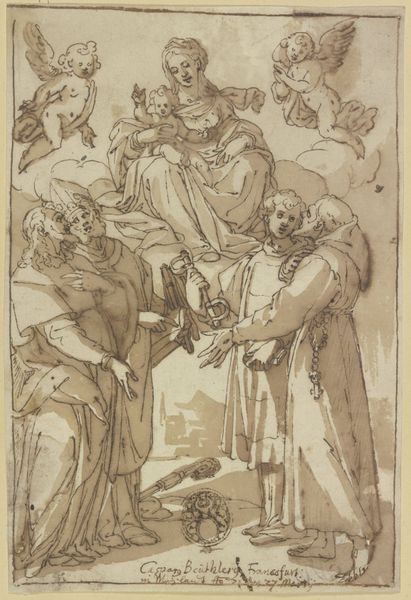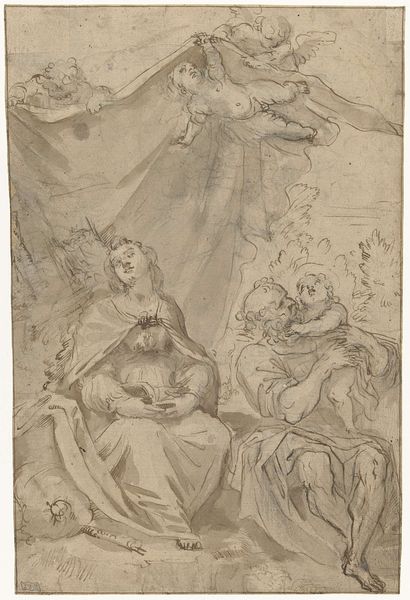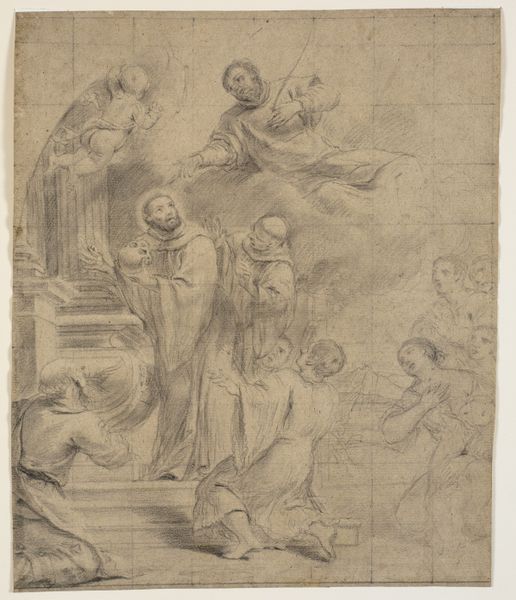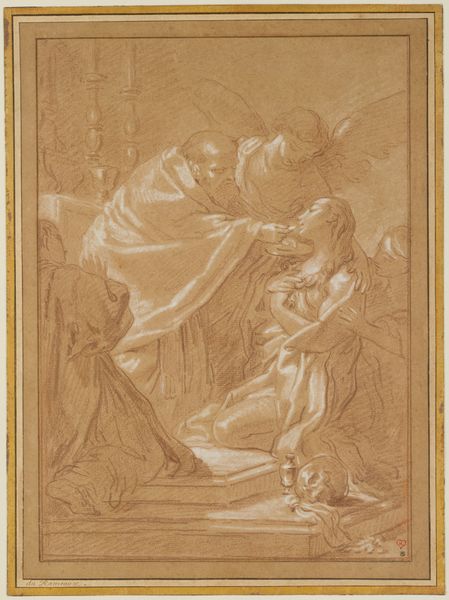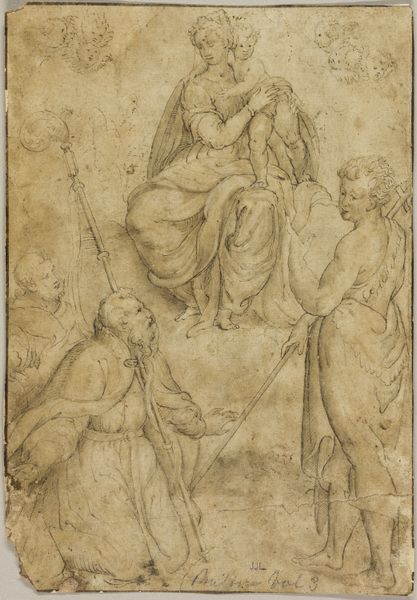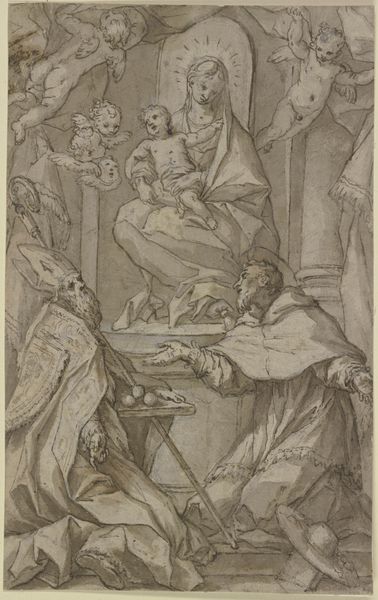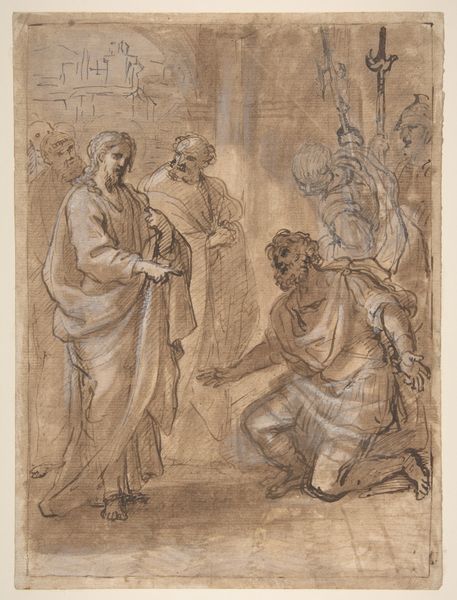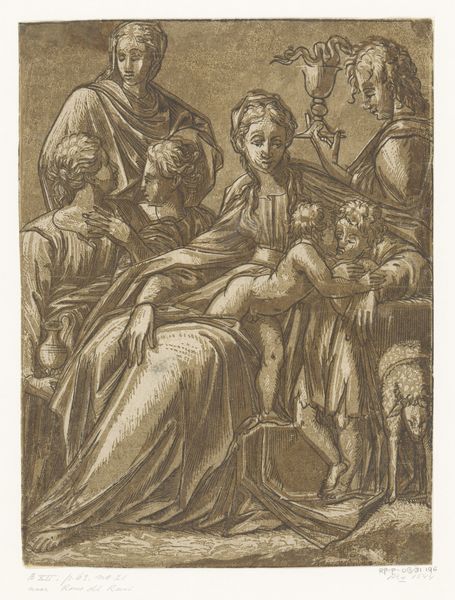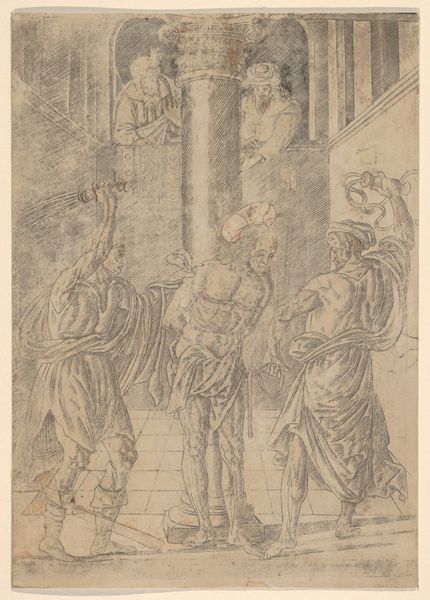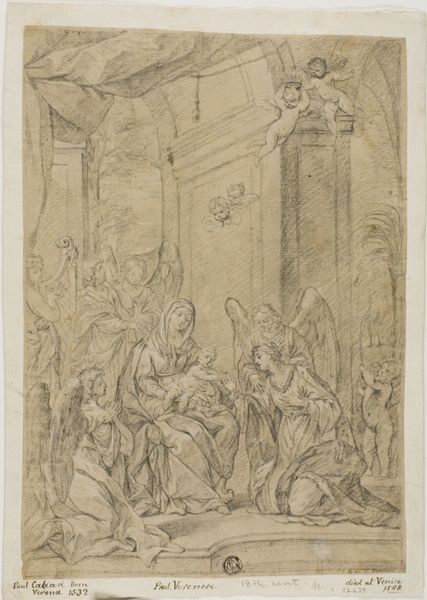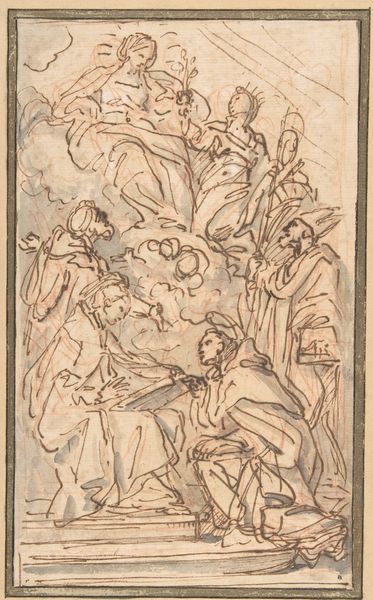
Portion of the Martyrdom of Saint Cecilia 1581 - 1641
0:00
0:00
drawing, print, pencil
#
drawing
# print
#
figuration
#
11_renaissance
#
pencil drawing
#
pencil
#
history-painting
#
italian-renaissance
Dimensions: 10 x 7 3/8in. (25.4 x 18.7cm)
Copyright: Public Domain
Curator: Here we have "Portion of the Martyrdom of Saint Cecilia," a pencil drawing from somewhere between 1581 and 1641 by Domenichino. It’s currently held at the Metropolitan Museum of Art. What strikes you about this work? Editor: It’s predominantly gray and immediately gives me the impression of solemnity, even grief. The figures seem to be in quiet desperation. The medium emphasizes a sense of process, like we are seeing the artist’s first capture of an idea on paper. Curator: Exactly. It depicts a scene related to the martyrdom of Saint Cecilia, a popular subject during the Renaissance. Notice the variety in the figures—the central figures seem to be nobles, judging by the papal garb, while those on the ground appear to be commoners assisting at the scene. Cecilia was sentenced to die by suffocation, and was attended to while she was imprisoned. Editor: The pitcher at the lower right speaks to this. Someone has to bring the water and towels, undertake the work. Who made these items? How many hands passed across them? What was their status relative to that of Cecilia's? Were the instruments the best, the newest, the finest that could have been provided? Who made these decisions? This is what is interesting to me about religious and royal artworks. Curator: That’s an interesting way to interpret that choice. One aspect to note, which may explain the choices you note in materials, is the shift toward naturalism during the late Renaissance and early Baroque period—even in religious works like these, and even if, as some think, the drawing represents the Saint's unsuccessful beheading! Artists sought to portray subjects with greater emotional depth and relatable human characteristics. Consider the implications this might have had at the time the drawing was created. The Church was rapidly losing followers to competing new denominations. Was this naturalism part of an effort to seem more real and honest to the general public? Editor: This touches on interesting political dynamics as it concerns art of this period. It’s so important to consider these questions, such as how materials are sourced, labor is divided, and decisions get made to create objects that can be, essentially, propaganda for religion, government, or aristocracy. Curator: Precisely. This preliminary drawing allows us a glimpse into the artist's process and also reveals much about the society that consumed and interpreted these images. Editor: A deeper look into what is considered "preliminary" shows a complex network of work, labor, and material realities behind the scenes of this tragic narrative.
Comments
No comments
Be the first to comment and join the conversation on the ultimate creative platform.
